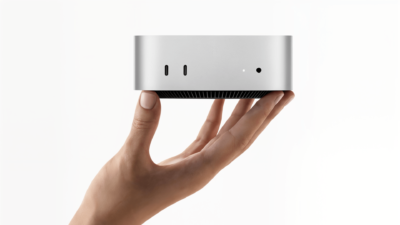Intel unveils Arrow Lake with incredible speed

Intel’s upcoming Arrow Lake processors could make a leap in DDR5 support. Rumours suggest speeds of up to 10,000 MT/s are possible. What would that mean for users – and how realistic is this development? Intel
Faster RAM for Intel CPUs?
According to the latest rumors, Intel is planning to equip its next desktop CPU generation with support for ultra-fast memory. According to a report by the online magazine wccftech The upcoming Arrow Lake processors, more specifically the “Intel Core Ultra 200”, could support DDR5 memory with speeds of up to 10,000 MT/s.
This would be a significant leap over current generations. So far, however, this is only an unconfirmed rumor. What does MT/s mean? MT/s stands for “mega transfers per second”. This term is used in processors and chips to describe the data transfer rate.
- “Mega” means millions, i.e. one million transfers.
- “Transfers” refers to the transmission of data packets.
- “per second” indicates that this happens in one second.
So MT/s measures how many millions of data transfers a chip or processor can perform in one second. It is a measure of the speed at which data can be moved. This unit is often used because it is more accurate than simple frequency specifications (such as MHz or GHz). It takes into account that modern chips can perform multiple data transfers per clock cycle.
The key to these high speeds is the use of CUDIMM (Clocked Unbuffered Dual In-Line Memory Module) modules. This special type of DDR5 memory aims to enable higher clock speeds. CUDIMMs have an additional clock generator that regenerates the clock signal, providing greater stability at higher frequencies.
Some memory manufacturers have already introduced high-speed CUDIMM modules. For example, Asgard recently announced a 9600 MT/s module and plans to reach the 10,000 MT/s mark in the future.
Gear 2: Curse or blessing?
There is a catch, however: the ultra-fast speeds of 8000 to 10,000 MT/s are only supposed to be achieved in the so-called “Gear 2” mode. In this configuration, the memory runs at twice the clock speed of the CPU memory controller.
This leads to higher transfer rates, but at the expense of latency. This could be problematic for gamers, as many games are sensitive to higher latencies. In practice, it might therefore make more sense to stay in “Gear 1” mode, which offers a 1:1 relationship between memory and controller clock. This would halve the effective speed, but provide better gaming performance.
Improvements over predecessors
Despite this limitation, supporting 10,000 MT/s would be a great improvement over current Intel CPUs. The 14th generation (Raptor Lake Refresh) already struggles to reach 8000 MT/s stably. AMD’s current Ryzen processors usually only reach a maximum of 7000 MT/s.
View of Arrow Lake
The Arrow Lake processors are rumored to launch on October 24, 2024. They would not only offer improved memory support, but also make progress in other areas. After the 14th generation, which was largely based on the architecture of its predecessor, many are hoping for a significant jump in performance.
It is important to emphasize that this information is unconfirmed rumors. Intel has not yet made any official statements about Arrow Lake’s specifications.
Digital marketing enthusiast and industry professional in Digital technologies, Technology News, Mobile phones, software, gadgets with vast experience in the tech industry, I have a keen interest in technology, News breaking.









